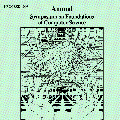Connectivity (or equivalently, unweighted maximum flow) is an important measure in graph theory and combinatorial optimization. Given a graph $G$ with vertices $s$ and $t$, the connectivity $\lambda(s,t)$ from $s$ to $t$ is defined to be the maximum number of edge-disjoint paths from $s$ to $t$ in $G$. Much research has gone into designing fast algorithms for computing connectivities in graphs. Previous work showed that it is possible to compute connectivities for all pairs of vertices in directed graphs with $m$ edges in $\tilde{O}(m^\omega)$ time [Chueng, Lau, and Leung, FOCS 2011], where $\omega \in [2,2.3716)$ is the exponent of matrix multiplication. For the related problem of computing "small connectivities," it was recently shown that for any positive integer $k$, we can compute $\min(k,\lambda(s,t))$ for all pairs of vertices $(s,t)$ in a directed graph with $n$ nodes in $\tilde{O}((kn)^\omega)$ time [Akmal and Jin, ICALP 2023]. In this paper, we present an alternate exposition of these $\tilde{O}(m^\omega)$ and $\tilde{O}((kn)^\omega)$ time algorithms, with simpler proofs of correctness. Earlier proofs were somewhat indirect, introducing an elegant but ad hoc "flow vector framework" for showing correctness of these algorithms. In contrast, we observe that these algorithms for computing exact and small connectivity values can be interpreted as testing whether certain generating functions enumerating families of edge-disjoint paths are nonzero. This new perspective yields more transparent proofs, and ties the approach for these problems more closely to the literature surrounding algebraic graph algorithms.
翻译:暂无翻译




